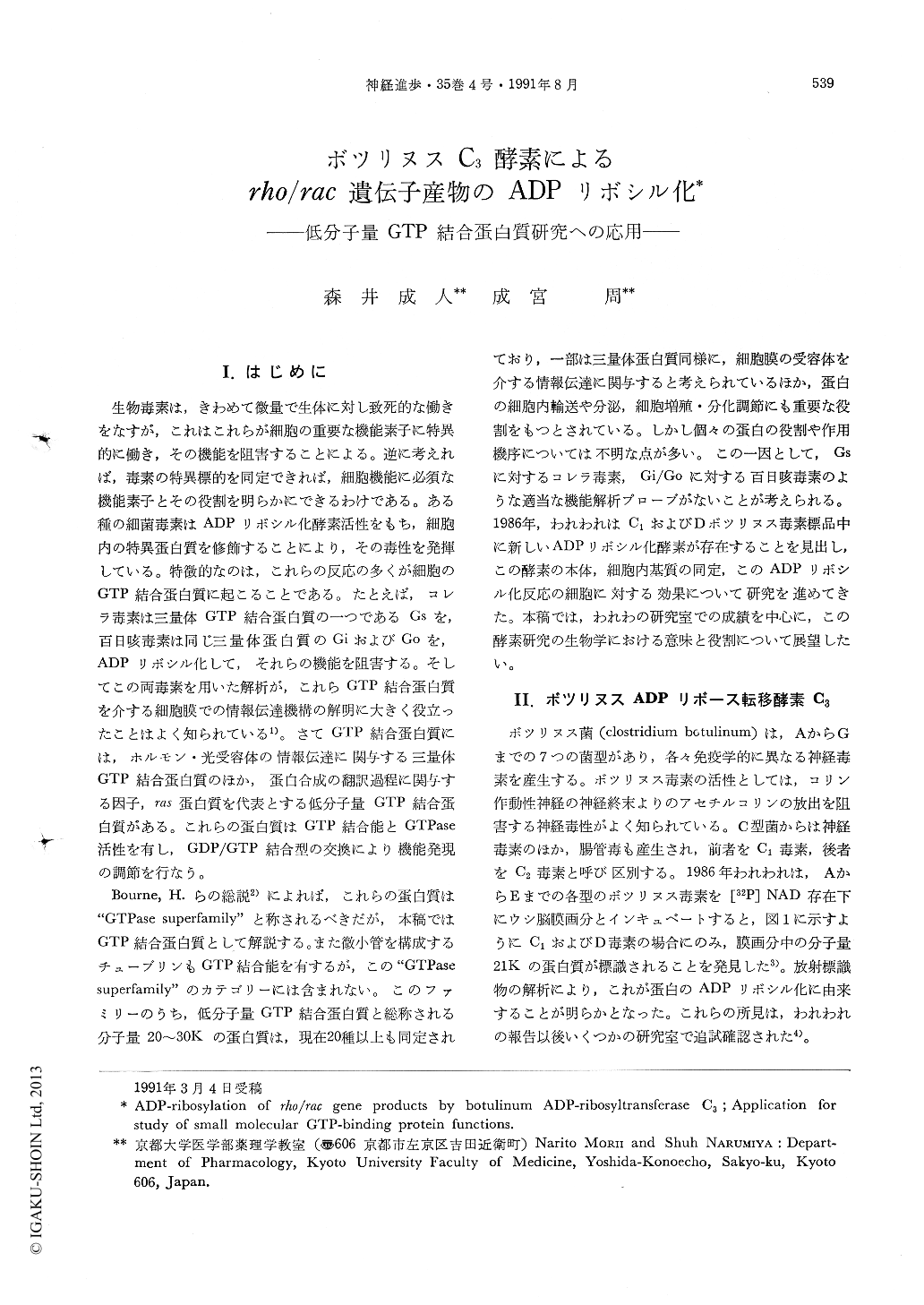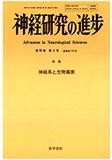Japanese
English
- 有料閲覧
- Abstract 文献概要
- 1ページ目 Look Inside
I.はじめに
生物毒素は,きわめて微量で生体に対し致死的な働きをなすが,これはこれらが細胞の重要な機能素子に特異的に働き,その機能を阻害することによる。逆に考えれば,毒素の特異標的を同定できれば,細胞機能に必須な機能素子とその役割を明らかにできるわけである。ある種の細菌毒素はADPリボシル化酵素活性をもち,細胞内の特異蛋白質を修飾することにより,その毒性を発揮している。特徴的なのは,これらの反応の多くが細胞のGTP結合蛋白質に起こることである。たとえば,コレラ毒素は三量体GTP結合蛋白質の一つであるGsを,百日咳毒素は同じ三量体蛋白質のGiおよびGoを,ADPリボシル化して,それらの機能を阻害する。そしてこの両毒素を用いた解析が,これらGTP結合蛋白質を介する細胞膜での情報伝達機構の解明に大きく役立ったことはよく知られている1)。さてGTP結合蛋白質には,ホルモン・光受容体の情報伝達に関与する三量体GTP結合蛋白質のほか,蛋白合成の翻訳過程に関与する因子,ras蛋白質を代表とする低分子量GTP結合蛋白質がある。これらの蛋白質はGTP結合能とGTPase活性を有し,GDP/GTP結合型の交換により機能発現の調節を行なう。
Bourne,H.らの総説2)によれば,これらの蛋白質は“GTPase superfamily”と称されるべきだが,本稿ではGTP結合蛋白質として解説する。また微小管を構成するチューブリンもGTP結合能を有するが,この“GTPasesuperfamily”のカテゴリーには含まれない。このファミリーのうち,低分子量GTP結合蛋白質と総称される分子量20~30Kの蛋白質は,現在20種以上も同定されており,一部は三量体蛋白質同様に,細胞膜の受容体を介する情報伝達に関与すると考えられているほか,蛋白の細胞内輸送や分泌,細胞増殖・分化調節にも重要な役割をもつとされている。しかし個々の蛋白の役割や作用機序については不明な点が多い。この一因として,Gsに対するコレラ毒素,Gi/Goに対する百日咳毒素のような適当な機能解析プローブがないことが考えられる。1986年,われわれはC1およびDボツリヌス毒素標品中に新しいADPリボシル化酵素が存在することを見出し,この酵素の本体,細胞内基質の同定,このADPリボシル化反応の細胞に対する効果について研究を進めてきた。本稿では,われわの研究室での成績を中心に,この酵素研究の生物学における意味と役割について展望したい。
Clostridium botulinum types C and D produces a novel 25 kda ADP-ribosyltransferase, named botulinum ADP-ribosyltransferase C3, which modifies a group of 20-25 kda cellular proteins. At present three rho (rho A, B and C) and two rac (rac 1 and 2) gene products are identified as ADP-ribosylation substrates for C3 enzyme. They are low molecular weight GTP-hinding proteins sharing about 40% homology with ras p21s. The ADP-ribosylation occurs at asparagine residue located in their putative effector domain. This modification dose not change their GTP-binding or GTPase activities. Neither dose it affect the interaction of rho protein with the purified rho-specific GTPase activating protein. However, the addition of C3 enzyme to cultured PC-12 cells causes the in situ ADP-ribosylation of the rho/rac proteins and induces differentiated phenotypic changes in the cells. These results suggest that ADP-ribosylation of rho/rac proteins interferes their interaction with yet unidentified effector molecules downstream in the signal transduction pathway. Detailed mechanism of this effect of ADP-ribosylation and functions of the rho/rac proteins in the cells are currently under analysis.

Copyright © 1991, Igaku-Shoin Ltd. All rights reserved.


